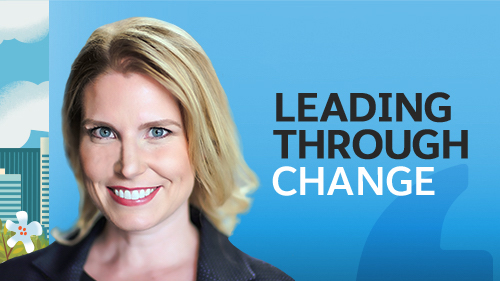Soledad O’Brien, the award-winning journalist and producer, recently told Salesforce CMO Stephanie Buscemi that in times of crisis, opportunities emerge in every organisation for true leaders to rise to the occasion.
“People in the workplace want a chance to lead, even in a pandemic,” she said. “Giving people the chance to run something is quite a big vote of confidence. And you need them – so it works both ways.”
But how, exactly, can middle managers – those outside the senior executive ranks – be heard in these critical times? We drilled into this question with Amy Wilkinson, CEO and founder of innovation firm Ingenuity, a lecturer at Stanford Graduate School of Business, and author of The Creator’s Code: The Six Essential Skills of Extraordinary Entrepreneurs.
As impressive as those qualifications are, they’re all from the past decade. In a previous career, she was a White House Fellow and Special Assistant to the United States Trade Representative.
Wilkinson has spent years studying what makes companies and entrepreneurs successful, through booms, busts and everything in between. Here are her three key recommendations now for middle managers and those who employ them.
1. Find the gap
Middle managers are typically on the front lines, particularly in times of upheaval. They clearly see what’s happening on the ground with customers, suppliers and partners, and are often better equipped to spot opportunities. “These folks are circulating in the problem zone, so they know what’s needed,” Wilkinson says.
A few examples of COVID-19-related gaps companies have filled:
-
Big data firm Palantir’s work with the U.S. CDC and the U.K. NHS on coronavirus-tracking software based on its data gathering and visualisation platform
-
Cosmetics giant L’Oreal’s product pivot at its North American plants to fill the enormous demand for hand sanitiser
-
Tee-shirt and underwear producer HanesBrands’ move to convert factories to make face masks.
-
Apparel brand Jockey International now manufactures critically needed personal protective equipment (PPE) in the form of Tier 3 isolation gowns.
Senior executives didn’t come up with these significant company pivots in a vacuum. As Wilkinson notes, nobody has a monopoly on great ideas and nobody can solve a problem alone, especially in times of turbulence. Right now, it’s all hands on deck.
“But if you can tap into other people’s points of view, and you can build on other people’s ideas quickly, that’s how you can solve problems you haven’t solved before.”
2. Repurpose existing ideas
Often, great ideas for products or services are not new. It’s the application that’s new.
“Anyone in the organisation can look for and recognise something in one department that can be applied somewhere else. It’s the cross-fertilisation of ideas,” says Wilkinson, who describes this as “being a sunbird” in reference to birds that pick up something from one area and drop it in another.
She stresses that these ideas can come from anywhere, including anything in your personal life, not necessarily from inside the organisation.
“It’s about lift and shift, import and export, and putting a new lens on something.”
This is happening left and right in the COVID-19 context. For example, clothing brand Cue making scrubs for St Vincent’s Hospital and sporting goods empire Decathlon switching from snorkelling masks to respirators.
3. Offer a solution
One of the best ways for middle managers to make an impact is to make an offer or bring an idea to their boss.
“Instead of saying ‘I need guidance or I can’t handle this task’ you can say ‘I see a need for us to do XYZ’ and I have a proposal or possible solution to share,” says Wilkinson. “That is a great way to get leaders’ attention, and it turns the power dynamic.”
The offer, she says, may be a game-changer for the organisation the boss didn’t realise they needed and can take pressure off stressed-out senior leaders. On the flip side, it can be as simple as offering to send questions in advance to a collaborator or to get on a call at 8pm
Wilkinson adds that this is effective even if the offer never gains traction. “There’s no harm, no foul,” she says. “It’s a positive intention, and people are going to notice that.”
Of course, implicit in several points above is senior leaders’ need to foster an entrepreneurial culture that empowers middle managers (and the entire organisation) to ideate and execute new ideas. Now, in an unprecedented time of upheaval for business, it is time for all of us to step up.
Find more advice for leadership, remote work, leading your business and more in the Leading Through Change series – our community is sharing insights and expertise to help businesses survive and thrive.
Leading Through Change
Helping business manage in crisis.


























